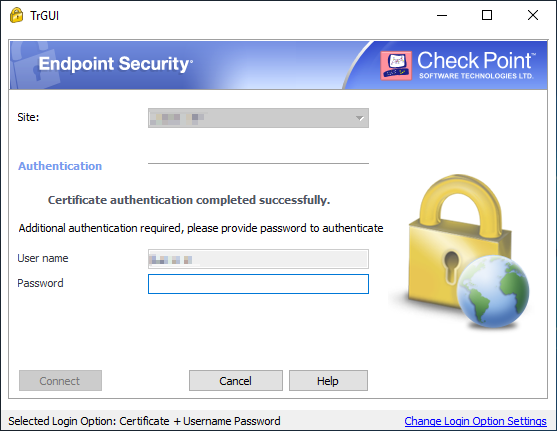

- #Endpoint security vpn for mac e75.01 download serial
- #Endpoint security vpn for mac e75.01 download free
#Endpoint security vpn for mac e75.01 download serial
More recent revisions of the PCIe standard provide hardware support for I/O virtualization.Defined by its number of lanes, the PCI Express electrical interface is also used in a variety of other standards, most notably the laptop expansion card interface ExpressCard and computer storage interfaces SATA Express, U.2 (SFF-8639) and M.2.Format specifications are maintained and developed by the PCI-SIG (PCI Special Interest Group), a group of more than 900 companies that also maintain the conventional PCI specifications.Contents1 Architecture1.1 Interconnect1.2 Lane1.3 Serial bus2 Form factors2.1 PCI Express (standard)2.1.1 Pinout2.1.2 Power2.2 PCI Express Mini Card2.2.1 Physical dimensions2.2.2 Electrical interface2.2.3 Mini-SATA (mSATA) variant2.2.4 PCI Express M.2 (Mini PCIe v2)2.3 PCI Express External Cabling2.3.1 PCI Express OCuLink2.4 Derivative forms3 History and revisions3.1 PCI Express 1.0a3.2 PCI Express 1.13.3 PCI Express 2.03.4 PCI Express 2.13.5 PCI Express 3.03.6 PCI Express 3.13.7 PCI Express 4.03.8 PCI Express 5.03.9 Extensions and future directions3.10 Draft process4 Hardware protocol summary4.1 Physical layer4.1.1 Data transmission4.2 Data link layer4.3 Transaction layer5 Applications5.1 External GPUs5.2 Storage devices5.3 Cluster interconnect6 Competing protocols7 Integrators List8 See also9 Notes10 References11 Further readingArchitecture An example of the PCI Express topology white 'junction boxes' represent PCI Express device downstream ports, while the gray ones represent upstream ports.:7 A PCI Express ×1 card containing a PCI Express switch (covered by a small heat sink), which creates multiple endpoints out of one endpoint and allows it to be shared by multiple devicesConceptually, the PCI Express bus is a high-speed serial replacement of the older PCI/PCI-X bus. PCIe has numerous improvements over the older standards, including higher maximum system bus throughput, lower I/O pin count and smaller physical footprint, better performance scaling for bus devices, a more detailed error detection and reporting mechanism (Advanced Error Reporting, AER), and native hot-swap functionality. It is the common motherboard interface for personal computers' graphics cards, hard drives, SSDs, Wi-Fi and Ethernet hardware connections.

5.x (32 GT/s): 3.938 GB/s (×1)63.01 GB/s (×16)StyleSerialHotplugging interfaceYes, if ExpressCard, Mobile PCI Express Module, XQD card or ThunderboltExternal interfaceYes, with PCI Express OCuLink and External Cabling, such as Various slots on a computer motherboard, from top to bottom: PCI Express ×4PCI Express ×16PCI Express ×1PCI Express ×16Conventional PCI (32-bit, 5 V)PCI Express (Peripheral Component Interconnect Express), officially abbreviated as PCIe or PCI-e, is a high-speed serial computer expansion bus standard, designed to replace the older PCI, PCI-X and AGP bus standards. PCI Express switches can create multiple endpoints out of one endpoint to allow sharing one endpoint with multiple devices.SpeedFor single-lane (×1) and 16-lane (×16) links, in each direction:v. of devicesOne device each on each endpoint of each connection.

#Endpoint security vpn for mac e75.01 download free
From Wikipedia, the free encyclopedia Jump to navigation Jump to search Not to be confused with PCI-X.For Engineering, Procurement, Construction and Installation, see EPCI.PCI ExpressYear created2003 16 years ago (2003)Created byIntelDellHPIBMSupersedesAGPPCIPCI-XWidth in bits1–32No.


 0 kommentar(er)
0 kommentar(er)
